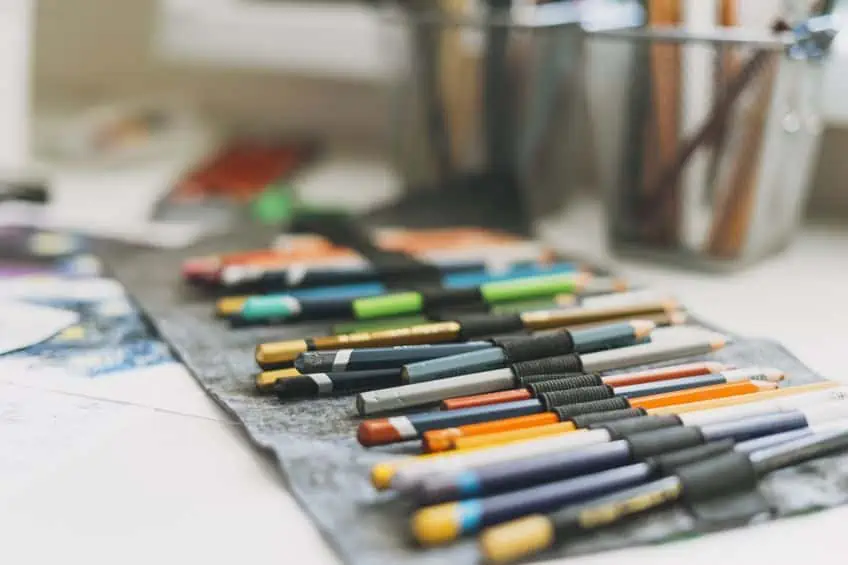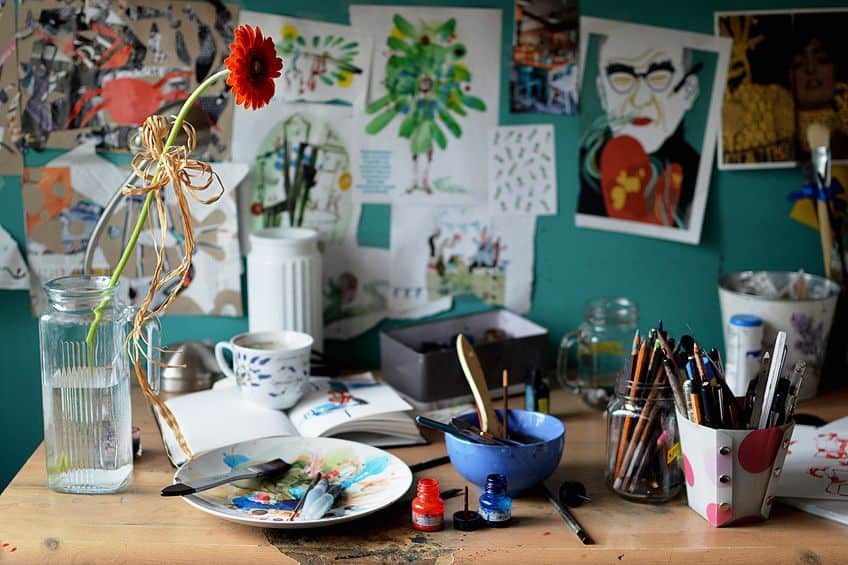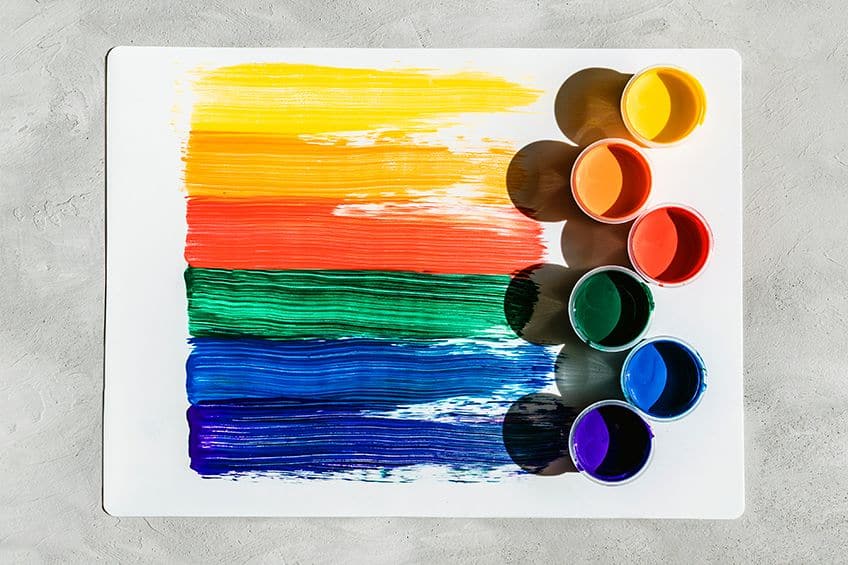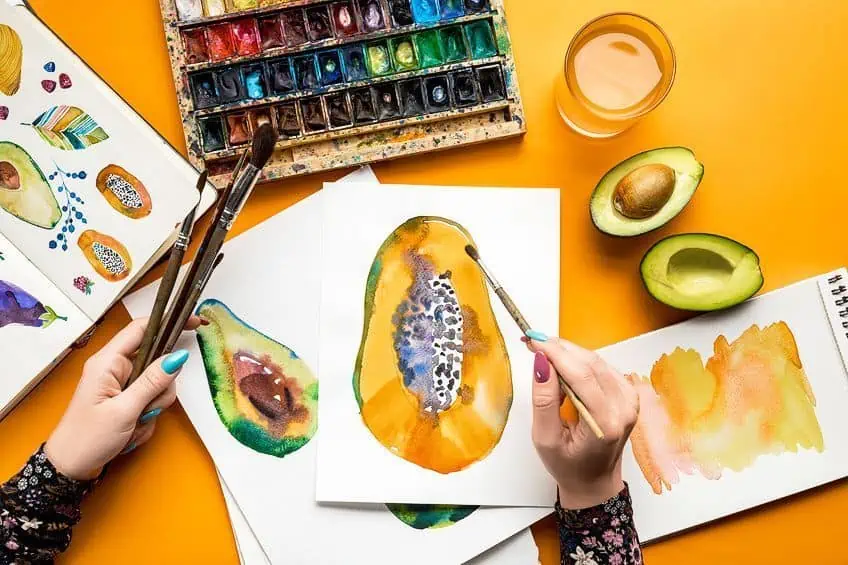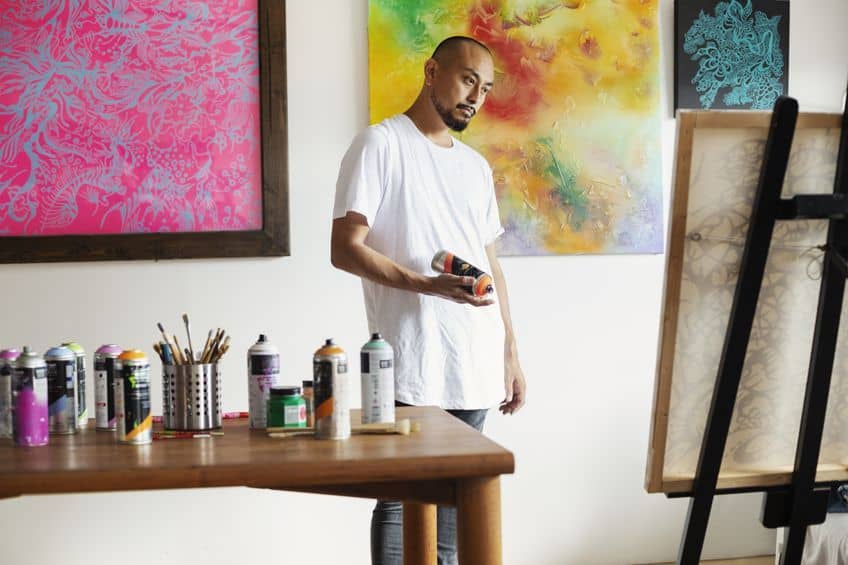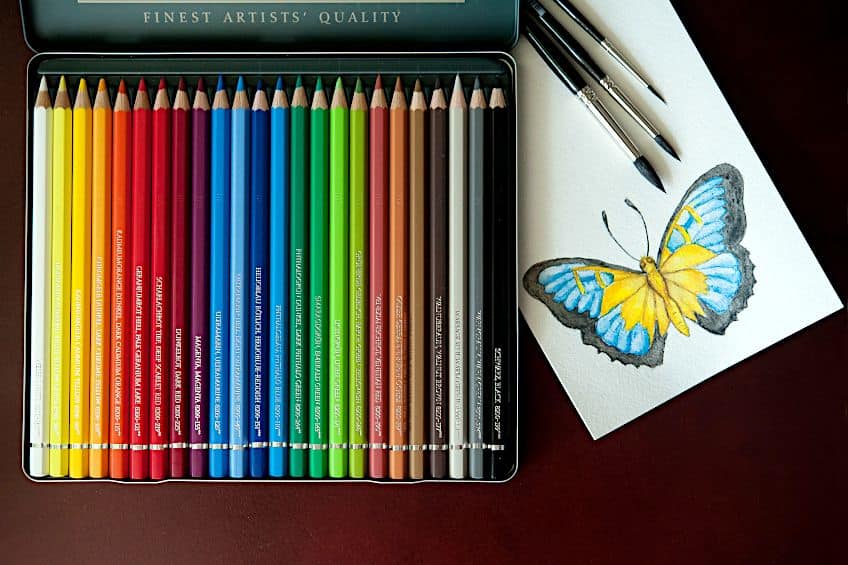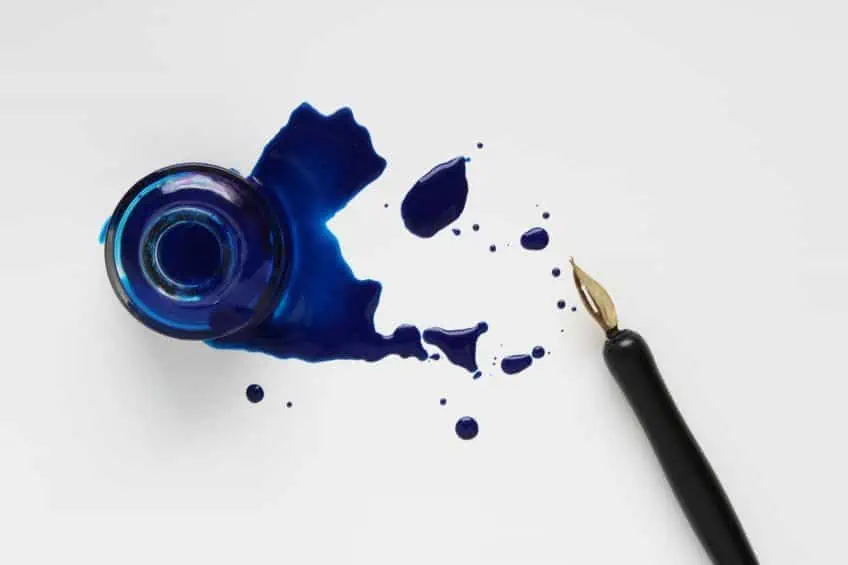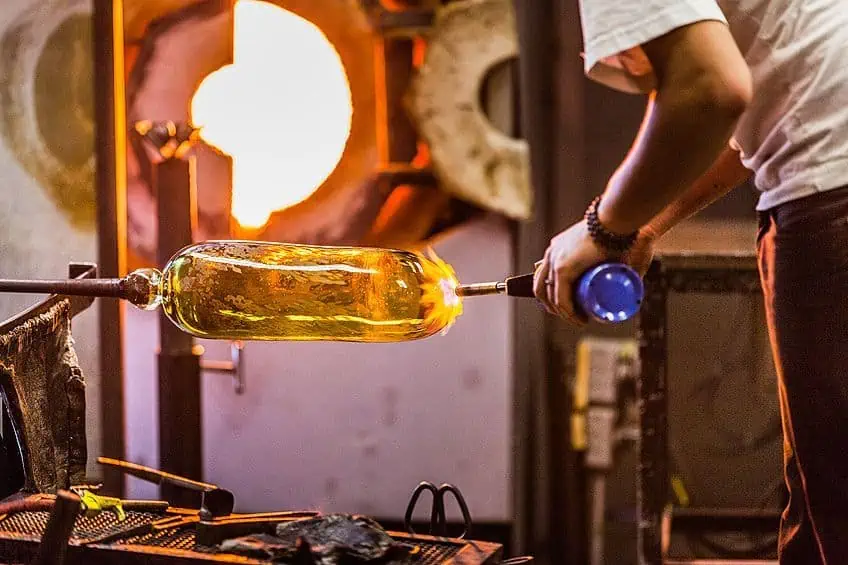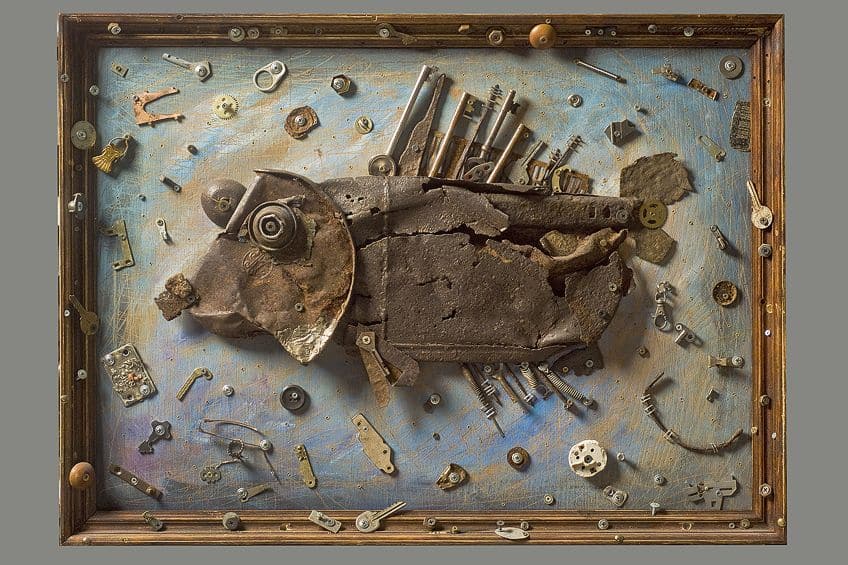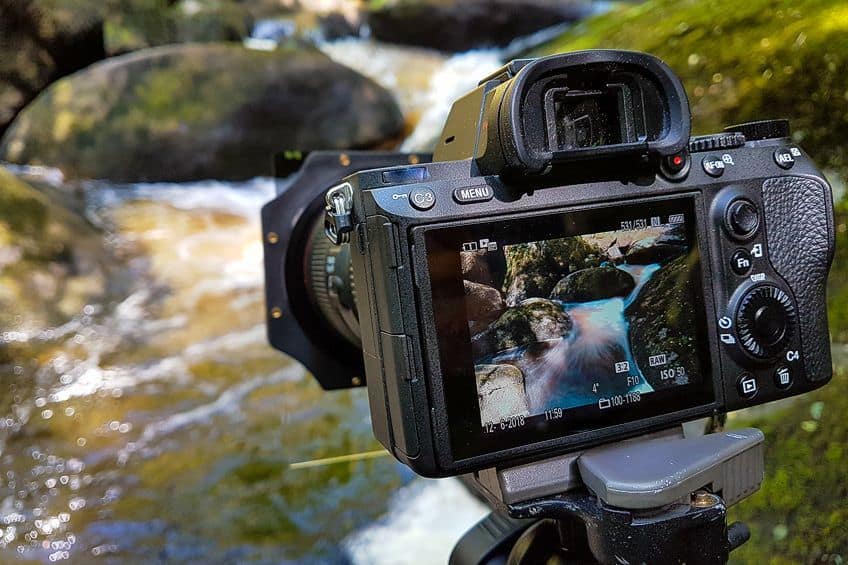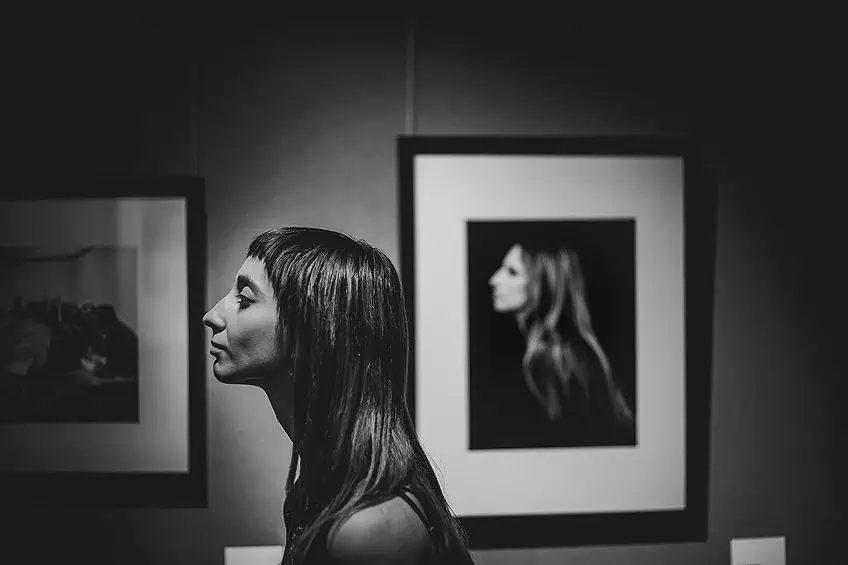Art Mediums – Different Art Mediums for Artists to Explore
Artists use a plethora of tools and materials to create art and express themselves. These are known as artistic mediums and there are almost as many of them as there are artists. Although we cannot include all the mediums used throughout history, we have compiled a list of the most common mediums used today. Find out the answer to “what is an art medium”, as well as how to choose an art medium that suits you and your style!
Contents
What Is a Medium in Art?
From the bone-carved effigies and painted cave walls of our early ancestors to the digital art created on tablets today, there have been countless art mediums over the past million years. Exploring different art mediums is fun and helps you develop your artistic skills and style, but what is a medium art definition?
A medium in art refers to both the kind of art as well as the different materials that are used to create them. For example, painting is an art type and acrylic paint is a material, however, both are considered art mediums. The liquid in which paint pigments are suspended is also referred to as a medium in art.
The more traditional art mediums are painting and drawing mediums, however, there are many other options out there.
Advances in technology have even created new artistic mediums that you can use to express yourself and your style. We have compiled an extensive art mediums list, however, there are many more out there for you to find, try, and enjoy.
Painting Art Mediums
To start our art medium list, we begin with painting art mediums. There are many different art mediums for painting with the most popular being oil paints, acrylic paints, and watercolors. Other painting mediums include gouache, tempera, and even spray paint, which we will also be exploring in this list. All painting mediums have a range of different finishes, opacities, and consistencies. This allows them to be used with a range of tools from your conventional brushes and sponges to painting knives and airbrushes.
Each of them has different strengths and weaknesses and can be used for various styles and surfaces.
Tempera Paint
Tempera paint is created when paint pigment is mixed with a water-based binding agent such as egg yolk, which is why it is sometimes referred to as egg tempura. Tempera is not only an art medium but is also an art style characterized by linear textures with sharp edges, intricate details, and warm bold colors. The medium is fast drying, long-lasting, and does not lose color with age. Some artworks seen in museums today were made as early as the 1st century C.E.
It was the main painting medium people used up until the 15th century and one of the most famous examples of tempera artworks is Botticelli’s The Birth of Venus (1486). Today these paints come in a multitude of finishes and viscosities, however, they are not as vibrant as oil or acrylic paints. Additionally, tempera paints can only be used in a thin layer so do not possess the same depth of color as these other painting mediums.
PROS
- Inexpensive
- Long-lasting
- Available in a variety of finishes and viscosities
CONS
- Less depth of color and vibrancy
- Dries quickly so requires some practice to use
Oil Paint
Oil paints are a traditional art medium with a rich history. Like tempera, oil paints are long-lasting with some having survived since before the 14th century when it was officially recognized in Europe. The Mona Lisa by da Vinci is an oil painting that was completed in 1506 and perfectly showcases oil paint longevity and blending ability.
As the name suggests, oil paints are made from oil, usually linseed oil, mixed with a powdered pigment.
Because they contain very little water, they tend to dry slower than other paints, which can be used to your advantage to blend complex colors or alter parts of the piece before it dries. These paints can have a strong odor and require a solvent to clean up so it is best to paint in a room that’s well-ventilated.
PROS
- Easy to blend
- Can create deep and complex colors
- Highly pigmented
- Widely available and long-lasting
CONS
- Strong odor
- Need solvents to clean brushes
Watercolor Paint
Watercolors are a very old painting medium that was originally used in scroll painting in East Asia. This translucent paint gives an airy effect to your artwork that showcases the texture and luminosity of the paper. Watercolor paints are made with a water-soluble binder instead of an oil-based binder like oil paints.
Watercolors can be difficult to work with and take some practice when you are just starting out. They come in dry or semi-dry pans or paint tubes and require a special watercolor paper that is made of cotton and is thick enough not to disintegrate or warp with water. They blend easily but cannot be layered like oil paints when wet. To build up the color you have to allow the paint to dry completely in between layers, however, they will never be completely opaque.
Watercolors are popularly used with other bolder mediums such as ink or colored pencils and are mainly used to create landscapes and abstract works as it is difficult to create fine details using solely watercolors. One of the most amazing watercolor artworks was created by artist Paul Sandby in 1778. The painting Cathedral of Llandaff shows how it is not impossible for you to create intricate pieces using watercolors; it merely requires patience and skill.
There are many techniques that are used in watercolor painting; however, the main methods include color lifting, wet-on-wet, wet-on-dry, and flat washes. Color lifting is used to lighten areas of a painting by removing paint once it has dried. The wet-on-wet technique involves using wet paint on wet paper, while the wet-on-dry technique has the artist using wet paint on dry paper.
PROS
- Inexpensive
- Widely available
- Works well with other mediums
- Gives a sheer effect
CONS
- Can be difficult to work with
- Need to build up color with layers
- Requires special paper
Acrylic Paint
Acrylic paint was developed around the 1930s and is a much more recent medium compared to oil paint. An acrylic polymer is mixed with paint pigment to create acrylic paint in various thicknesses. Acrylic paints are water-based so they dry much faster than oil paints, however, they dry slower than watercolors because they are thicker. This synthetic medium is also water resistant once dry and long-lasting. Campbell’s Soup Cans (1962) by artist Warhol is a lighthearted painting that showcases the bright vibrant colors of acrylic painting.
Acrylic paint is a highly versatile paint that comes in many consistencies and allows you to create various effects, from thick oil paints to flowy watercolors and inks. Acrylic paint can easily be cleaned off brushes with water and this water-solubility also only makes it simple to change its consistency and thickness.
Broadly, acrylic paint comes in three different thicknesses: heavy-body, soft-body, and high-flow.
Heavy-body acrylic paints are the thickest and are great for beginners and creating texture in impasto paintings. Soft-body acrylics are thinner and look similar to watercolors, they are also more translucent than heavy-body acrylics. High-flow paints are a similar consistency to ink and can be dripped or splattered onto the canvas or even used in an airbrush.
Another popular method for using acrylic paints is acrylic pouring. Adding a pouring medium to acrylic paint gives it the consistency of warm honey, which allows it to be poured onto a canvas. Pouring it in layers of different colors and slowly spreading the paint around, creates striking geometric designs that look complex. You can also dip materials such as clay sculptures into acrylic pouring paint or use silicone and heat guns to produce a bubble effect.
PROS
- Inexpensive and widely available
- Versatile and beginner friendly
- Does not require the use of a solvent
CONS
- Can be too fast drying making it difficult to blend
Gouache
Like acrylic paint, gouache is also a water-based paint, however, it is much thicker and opaque. Gouache is made by mixing pigments with water-soluble gum to create an opaque paint. In the 18th century, it was used alongside pastels and watercolors to create details and structure. William Turner used gouache and watercolors to create beautiful soft landscapes such as The Scarlet Sunset (1840). By using gouache, the artist creates a much more vibrant color palette that could be achieved with only watercolors.
You can either use gouache as is or give it the feel of watercolor paint by diluting it with water. This painting medium can be tricky to use at first as dried gouache is reactivated when wet paint is layered on top of it. As with watercolors, gouache comes in both pan and tube varieties.
PROS
- Can be layered
- Quick drying
CONS
- Takes some practice to use
Encaustic Paint
Encaustic paint is an ancient painting medium and is a paint even the Egyptians used over 3000 years ago. This paint is made of wax that has been warmed and mixed with pigments. The wax paint is then applied to the surface of wood or canvas with hot metal tools.
Although this paint is now a lesser-known painting medium it is still widely used, however, today heating guns are more commonly employed to apply the paint.
Also known as hot wax painting, encaustic paint can be used to create complex paintings such as those on the mural Creation by Rivera (1922). The wax in these paints is impermeable so they do not decay or change color over the years, and also do not require solvents or generate fumes like with oil paints. The wax can be difficult to work with, however, as it must remain hot to keep its liquid state.
PROS
- Very long-lasting
- Does not require a solvent
- Does not produce any harsh fumes
CONS
- Can be expensive
- Requires heating equipment
- Takes some practice to use
Spray Paint
Previously thought to be the tools of street graffiti artists, spray paint has become increasingly popular in the broader art community. After its creation in 1949, spray paint has become a portable and simple tool to create art, eliminating the need for both brushes and individual paints. Spray paints are made by adding a gas propellant to cans of paint and compressing them.
One of the most iconic spray paintings was Flower Thrower created in 2003 by Banksy. This is a predominantly black-and-white piece and was made in Jerusalem as a comment on the region’s political climate. Spray paint comes in many different finishes and colors and is relatively simple to use.
PROS
- Inexpensive and widely available
- Simple to use
CONS
- Strong odor and fumes
- Difficult to remove
Drawing Art Mediums
Drawing mediums use lines and shading on surfaces such as canvas or paper to create impactful and detailed pieces. There are a great number of different drawing mediums available, each with its own uses and looks. Drawing mediums include color and graphite pencils, watercolor pencils, ink, markers, charcoal, and pastels. Many artists start with drawing mediums as it is usually more beginner and budget-friendly than painting or sculpting mediums.
Graphite
Famous since the 17th century, almost all artists start with this drawing medium. Many artists continue to use graphite pencils to sketch out designs before using other mediums and so it remains fundamental to almost every piece no matter the medium. Graphite can also be used on its own to create detailed artworks such as the whimsical piece by artist Adonna Khare called Bear and Bunny (2015).
Today we do not use pure graphite in pencils but rather graphite-based mediums which are simpler and much easier to care for.
These pencils come in a variety of different hardness for every need with “B” grade pencils being softer and “H” grade pencils being harder. The HB pencil we use most commonly for writing is in the middle of the scale. Softer pencils are good for darker and thicker lines and 9B is the softest-grade graphite pencil available. Harder pencils are used for thin, light lines and are great for sketches and technical drawings with 10H being the hardest grade pencil. You will need to use a fixative spray when working with graphite pencils to prevent your pieces from smudging after they are finished.
PROS
- Inexpensive and widely available
- Easier to use and less messy than paint and charcoal
- Come in a variety of thicknesses and hardness
CONS
- Can leave a gray cast on your work
- Smudges easily
Colored Pencils
Although you may think that colored pencils are only used in children’s coloring books, it is actually an art medium used by many professional artists. Colored pencils are a relatively new medium having only been mass-produced since the beginning of the 20th century. This often-underrated medium is more inexpensive than many other mediums and offers depth of color and the ability to express yourself. With practice, you can create photorealistic pieces with colored pencils that rival even oil and acrylic paintings.
This is never more apparent than in Anne Kullberg’s Broken Rules (2018). The simple color palette and composition create a realistic portrait of a woman that looks deceptively simple at first glance but is layered with intricate details and expertly placed highlights and shading. Colored pencils have an oil- or wax-based center that has been mixed with colored pigments. A popular technique with colored pencils is burnishing, which involves layering the colors or using a solvent to further intensify the color of the pencil and cover every trace of the paper underneath.
PROS
- Inexpensive and readily available
- Blend well
- Vibrant colors
CONS
- Difficult to cover large areas
- Cannot lighten colors easily
Conté
Historically used as a substitute for graphite before there were graphite pencils, conté is a drawing medium made from graphite or charcoal combined with clay. They were created in the late 18th century in response to the shortage of graphite that was caused by the Napoleonic Wars. Today they also come in crayons, which make it easier to control the darkness and shading in your piece.
The Black Bow by Seurat in 1882 is a haunting example of artwork using conté crayons.
PROS
- Inexpensive
- Give a velvety finish
CONS
- Smudges easily
- Needs a fixative spray
Watercolor Pencils
Watercolor pencils were first produced in the 1940s and are similar to colored pencils, however, their center is made from a water-soluble binder instead of wax. Although this makes them more versatile, they are also much less pigmented and bright than wax-colored pencils. Unlike colored pencils which can only be used dry, watercolor pencils can be used with both dry and wet techniques. Using these pencils with water produces a similar effect to using watercolor paints and can enhance and intensify their colors.
PROS
- Versatile
- Can give a watercolor paint effect
- Work well with other mediums
CONS
- More expensive and smaller color range than regular color pencils
- Less pigmented
- Need watercolor paper if using wet techniques.
Chalk
Another old art medium from more than 10000 years ago is chalk. Artistic chalk can be broadly divided into three main types, each made from different materials. White chalk is the most common chalk and is made from limestone. Color pigments are added to white chalk to create the rainbow of options available. Black chalk is made from a soft black stone and carbon. Sanguine chalk is made from red ochre. Each of these materials are crushed into a powder, combined with clay and water, and allowed to dry to create chalk.
Chalk first became recognized as its own art medium during the renaissance, whereas before it was mainly used for sketching. Jean Clouet was a famous French artist who used red, black, and white chalk to make many of his almost 130 drawings.
PROS
- Blends easily
- Inexpensive and widely available
CONS
- Not very pigmented
- Requires a fixative
Charcoal
Charcoal is one of the oldest drawing art mediums and was used almost 30,000 years ago in cave paintings. Charcoal is created by mixing powdered organic material with either a binder such as wax or gum or by removing all the oxygen from it. This versatile medium has both thick and thinner options and can be easily erased and smudged.
This is great during the drawing process, but you will require a sealant or fixative over your piece once it is finished to ensure its longevity. The intensity of charcoal is skillfully controlled by the pressure placed on the charcoal and can produce outlines, shading, and details with the right techniques.
PROS
- Inexpensive
- Easy blending and shading
- Easy to erase
CONS
- Requires a fixative
- Easily smudged or rubbed off accidentally
Pastel
Made popular in the 18th century, pastels are another great drawing medium. There are a few varieties of pastels available and, like acrylics, come in different consistencies with soft pastels used for smudging and harder ones creating more defined lines. There are two main varieties of pastels namely oil pastels and water pastels. Oil pastels are similar to oil paints and produce more vibrant colors.
Water pastels are more transparent but blend easier than oil pastels and work well with other mediums.
Other types of pastels include dry pastels, which contain chalk and a binder, as well as wax pastels, which are mixed with wax and a binder. Newer pan pastels are also available and can be applied with a sponge. The different parts of the pastel are used to create different effects and textures. The tip is used for details and fine lines, whereas the sides are used to cover broad areas in color.
PROS
- Inexpensive and widely available
- Available in a range of colors
CONS
- Require some practice to work with
- Can be messy
- Dry pastels require a fixative
Ink
Ink has been used in many ways since 200 C.E. to create art. This wet medium can either be used with other mediums, for example, as a hard contrasting outline on watercolors, or on its own in line art and calligraphy. The multitude of inks, ink pens, and markers available allow for this flexibility. Graphic ink pens are great for illustrations, whereas fountain pens are ideal for calligraphy. Inks are also available in many different colors, opacities, and finishes, including metallics, watercolor, alcohol, and regular pot inks.
This striking medium can take years to master. Unlike pencils and paints, ink is unforgiving and you cannot erase it. You will need to learn to take your mistakes in your stride and transform them into something unique. Arguably the most famous ink drawing is da Vinci’s The Vitruvian Man (1492).
Another technique of using ink is to create a scratchboard. A scratchboard is a thick paper or poster board with a thin layer of kaolin clay on its surface. This paper is then coated in black ink and allowed to dry. You can then use a sharp knife or tool to scratch or cut away the dark ink and reveal the paper underneath. This creates drawings using negative space and you can experiment with the colors underneath the ink to make something special.
PROS
- Highly versatile
- Works well with other mediums
- Can be used on multiple surfaces
CONS
- Cannot be erased
- Not recommended for beginners
- Requires some knowledge of how to use the different types of inks
- Can be expensive
Markers
Another new medium invented around the same time as colored pencils are markers. Markers are highly versatile and widely available. They make excellent sketching tools or are great when used for detailed work. Markers have various shaped tips and come in many different vivid colors and finishes that can be layered or blended for complex and striking pieces.
The markers mainly used in art include paint-based markers as well as ink-based markers such as liners, alcohol markers, and brush-tip markers.
PROS
- Versatile
- Widely available
- Vivid colors
CONS
- Can have an odor
- Cannot be erased
Sculpting Art Mediums
Sculpting art mediums are three-dimensional types of art mediums, which move your work off the flat surface of canvas or paper and transform it into a piece that can be looked at from all sides. Sculptures are the oldest known form of art. From our earliest ancestors carving out of stone and clay to modern-day installations. Sculptures can be made of a variety of different mediums from wood to glass and many have religious or cultural significance.
In art, sculptures fall into specific categories namely free-standing, bas-relief, and high-relief, depending on their construction. Free-standing sculptures are pieces that are not attached to walls, such as figures like the Statue of Liberty, and can be viewed from any angle. Bas-relief sculptures are carved out of a base material so that the sculpture stands out subtly and the base material forms a background, such as the Greek Elgin Marbles at the British Museum in London.
High-relief sculptures are similar to bas-relief sculptures but instead of slightly projecting, the subject stands out prominently against the base material it is carved from. These sculptures are usually at least half of the subject’s body from the base and are almost three-dimensional, one example being Mount Rushmore, in South Dakota, USA. Sculptures are made through various methods including carving, molding, modeling, and chipping chosen materials to transform them into the desired shape.
Traditional Sculpting Mediums
Clay, wood, and stone are generally the most common mediums people sculpt with as they are the most widely available and versatile. These traditional sculpting mediums have been used throughout history and each has its own unique strengths and applications.
Clay
Clay is often the first sculpting medium used by artists and consists of either pouring liquid clay into a mold, or modeling and manipulating soft clay into shape and then letting it harden. Clay is the most beginner-friendly medium as it does not require as many tools or specific techniques to get started as with other sculpting mediums. Modeling clay is used with pottery wheels to create round, symmetric pieces or with various knives and tools to mold them into your desired shape.
Slip casting is another method of using the clay medium.
Clay is mixed with water in roughly 1:4 ratio to create a liquid which is known as slip. This liquid clay is then poured into molds and allowed to dry and removed from the molds. After you have created your piece, it can then be painted and fired in a kiln to transform the raw clay into lasting artwork. This process is called bisque firing and it hardens the clay. The clay can then be painted, polished, or glazed if desired.
PROS
- Easy to use
- Beginner friendly
CONS
- Requires a kiln to fire
Woodworking
Woodworking is another relatively easy sculpting medium. When creating sculptures from wood, you utilize carving techniques to slowly remove material from a block of wood and reveal your designs. You do this using a chisel or wood carving knife. Some of the most common techniques include whittling and chip carving. Whittling involves repeatedly shaving off thin strips of wood to shape it. In chip carving, a knife is used to cut out and remove small sections of the wood to create different designs.
There are many different types of wood out there but not all are used for carving. Softwoods are the best to use for woodworking as they are easier to work with. Like with clay, when you are done there are many varnishes and finishes you can use to finish off your piece. You can also paint it using acrylic paint or some artists even burn the surface of their sculptures for a unique effect.
PROS
- Beginner friendly
- Does not require many tools
CONS
- Take practice to learn how to shape wood
- Certain woods can be expensive
Stone
Stone carving is one of the oldest sculpting mediums and requires years of practice. The ancient Greeks and Romans famously created beautiful realistic sculptures from many different stones, particularly marble. Today, stone sculptures are made mainly from limestone and sandstone, and they are easier to work with and more widely available.
Stone sculptors today use a variety of carving and chipping techniques and metal tools to create their pieces.
PROS
- Long-lasting
- Versatile
- Timeless look
CONS
- Not beginner friendly
- Heavy and difficult to maneuver
- Can chip or break if handled incorrectly
Contemporary Sculpting Mediums
There is also a plethora of more contemporary sculpting mediums including glass, resin, and metal. These mediums require more tools, are generally harder to find, or have been developed fairly recently compared to traditional sculpting mediums. Some artists even make use of unconventional materials such as foam and plastics to create their sculptures.
Glass Working
Glassworking has become an even more popular art medium in recent years and is used in an array of sculpting and decorative art. Glassworking has become increasingly popular in recent years and usually makes use of two main techniques. When glass is heated in a kiln to over 1500°C it becomes a liquid, which can then be blown, modeled, or even poured into a mold. Many techniques are used to sculpt glass, but some basics are slumping and fusing.
Slumping reshapes hot glass whereas fusing combines different pieces of glass into one piece.
The second method of working with glass is using cold glass. Cold glass cannot be molded like liquid glass, but it can be ground, polished, and engraved. Cold glass can also be etched using sandblasting or acid to change the surface texture of the glass. Colored glass can also be carefully cut into pieces with a glass cutter, arranged, and fused together with soldered zinc to create beautiful stained glass arrangements. Learning how to work with glass so that it does not crack or shatter can take years of practice and can be very expensive.
PROS
- Highly Versatile
- Does not need to be finished with a varnish or fired
CONS
- Expensive
- Requires training
- Requires equipment such as a kiln or glass cutters
Resin
Epoxy resin is a very new sculpting medium having only been invented in the last century. Resin sculptures are created by resin casting, which entails pouring the liquid medium into a mold you have created and then letting it cure. Artists who use resin to create sculptures either cast them in one piece or use multiple molds to create individual pieces of a larger installation that are then combined. Epoxy resin is long-lasting and very versatile; however, it can also be very expensive and gives off a lot of fumes.
PROS
- Long-lasting
- Widely available
- Versatile
CONS
- Requires a mold
- Expensive
- Has strong fumes
Metalworking
Metalworking has been around since 6000 B.C.E. and formed the bases of modern society. Today metalworking is used to create sculptures that can be both strong and bold as well as soft and delicate. There are different methods of metalworking, however, the basic techniques include bending, cutting, and assembling the metal into the shapes you want.
Metalworking requires many tools depending on what you are creating and can be very expensive.
PROS
- Versatile
- Durable
CONS
- Requires many tools and different equipment
- Can be heavy and difficult to work with
Mixed Media
Mixed media can take many forms. Mixed media is not just one medium but rather a combination of different mediums within one piece. This unconventional art medium allows you to construct flat and three-dimensional pieces by combining various materials and techniques.
One of the most popular mixed media techniques is collage. This technique uses lots of small pieces of materials such as paper or cloth and combines them to create one unique cohesive piece. In a collage, you play with different colors and textures to create visual interest. Assemblage is like a three-dimensional collage and combines an array of different objects, textures, and materials to create a striking piece.
Found objects are a mixed media technique that takes everyday objects and reinvents them as art. Shells, books, wood, old cans or jars, and even pieces of furniture and candy have been used to create these amazing and unusual pieces.
PROS
- Uses everyday objects that can be inexpensive
CONS
- Time-consuming to find and combine objects
- Must have an understanding of how different mediums interact with each other
Digital Art Mediums
Art and technology have become more interwoven over the past few decades adding to more traditional mediums as well as creating new mediums altogether. Digital mediums have allowed us to engage with unique perspectives in new and interesting ways.
Photography
As technology develops new ways of creating art are born. This is never truer than with the invention of the camera in the early 19th century. Photography as a medium aims to capture life through the unique perspective or lens of the photographer. Photography not only uses different cameras but also relies on lenses, lighting, exposure, and various other setting parameters to frame and capture something truly unique.
Artists capturing small details or single subjects usually make use of a shallow depth of field and keep the particular subject in focus. Artists who aim to capture large subjects and areas opt for wider camera lenses. Today the medium has been further enhanced with digital cameras and various post-processing programs and filters to really showcase the message behind the picture and provide possibilities for subject manipulation.
Your photography style, subject matter, and themes are the main determinants of the types of lenses and equipment that you will make use of when using the photography medium. Landscape photography focuses on both the big picture and smaller details of urban and rural life. This style usually does not contain people and centers on the surroundings and environment. Some man-made structures are captured such as cityscapes, but the usual subjects are natural landscapes, which showcase nature’s wonders. Pictures of the Grand Canyon or Niagara Falls are examples of landscape photography.
Wildlife photography focuses on the more animalistic part of nature. In this style, you aim to capture all sorts of animals in their natural habitat to showcase their unique lives and behaviors. These photographs are not just amazing to look at, many of them draw attention to endangered species and environmental concerns. Portrait photography aims to capture the uniqueness of the human form. This can either be documentary-style candid moments that showcase the individuality of people and their experiences or shot on a set with different lighting and poses. Nude portraits also explore the beauty of the human form.
PROS
- Allow you to capture exactly what you see
- Portable
CONS
- Equipment can be expensive
Digital Art
Technology also offers new ways of drawing and sculpting. Artists today use powerful apps and programs to draw with and edit. This is usually on a tablet allowing you to create just as you would draw or paint on a canvas. These devices can be expensive but digital drawing can be much more approachable than traditional mediums as it allows you to work in separate layers and edit them freely or even completely undo mistakes.
Three-dimensional printers offer ways to sculpt using technology. The machines are expensive and take some training to use, however, you can create endless designs with them quickly.
Other forms of digital art include the use of laser beams and lights to create drawings using shadows and lighting instead of a brush and canvas. Many artists also make use of smoke to bounce light or projectors with negative space. Robots and AI are also starting to be used to create interactive art or act as pieces themselves.
PROS
- Easy to undo mistakes without affecting the rest of the piece
- Interactive
CONS
- Equipment is expensive
- Many mediums need some knowledge of programming or mechanics
Performance Art
Performance art or exhibit are other forms of nontraditional types of art mediums. These mediums are used to convey particular messages or draw attention to specific issues that may concern the artist.
Installation Art
Installation art plays on the senses and combines different audio, visual, and occasionally tactical and olfactory effects to communicate their message. Installations can focus on various topics, including politics, and marginalized groups.
A popular form of installation art is the use of a projector to project light onto a surface to create the piece using shadows and negative space.
Environmental Art
Environmental art is another form of performance art that combines other mediums to produce a message relating to environmental concerns. In the past, there have been pieces on climate crises, animal rights, and endangered plants and animals. These artworks provide an essential service by drawing attention to particular issues and occasionally generating funding to help alleviate them.
A great example of an environmental piece is the Digioxide by artist Dmitry Morozov. This piece is actually a small robot that creates digital art based on the pollution levels that it detects. This art highlights the invisible pollution that is present every day in cities, as the more polluted the air the more vibrant the painting.
We hope you have enjoyed this art mediums list. Art is continuously evolving and there is an almost endless array of different art mediums available for artists to use. When deciding on the perfect medium for you, consider their strengths and weaknesses, your budget and experience as well as the look and feel you would like for your final piece. Try exploring different art mediums to improve your skills or develop your unique art style!
Take a look at our different art mediums webstory here!
Frequently Asked Questions
What Is a Medium Art Definition?
A medium in art refers to both the kind of art as well as the different materials that are used to create them. For example, drawing is an art type and charcoal is an art material, however, both are considered art mediums. The liquid that paint pigments are suspended in is also sometimes referred to as a medium in art. Technology such as drawing tablets and three-dimensional printers are also considered mediums in art.
What Is the Easiest Art Medium?
Every art medium has its strengths and weaknesses and which one you find the easiest often depends on the techniques that you use. If you paint on canvas, then acrylic paints are an inexpensive and very beginner-friendly option. If you are considering drawing mediums, then graphite or colored pencils would be a better option. If you enjoy sculpting, modeling clay is straightforward to use and does not require much equipment or training compared to other sculpting mediums.
How Do You Choose an Art Medium?
When deciding which medium is right for you, consider their pros and cons, your budget, and skill level, as well as the look and feel you would like to have in your art. Try exploring different art mediums to not only improve your skills or develop your unique art style, but also to get an idea of which ones you enjoy working with.
Jordan Anthony is a Cape Town-based film photographer, curator, and arts writer. She holds a Bachelor of Art in Fine Arts from the University of the Witwatersrand, Johannesburg, where she explored themes like healing, identity, dreams, and intuitive creation in her Contemporary art practice. Jordan has collaborated with various local art institutions, including the KZNSA Gallery in Durban, the Turbine Art Fair, and the Wits Art Museum. Her photography focuses on abstract color manipulations, portraiture, candid shots, and urban landscapes. She’s intrigued by philosophy, memory, and esotericism, drawing inspiration from Surrealism, Fluxus, and ancient civilizations, as well as childhood influences and found objects. Jordan is working for artfilemagazine since 2022 and writes blog posts about art history and photography.
Learn more about Jordan Anthony and about us.
Cite this Article
Jordan, Anthony, “Art Mediums – Different Art Mediums for Artists to Explore.” artfilemagazine – Your Online Art Source. January 31, 2023. URL: https://artfilemagazine.com/art-mediums/
Anthony, J. (2023, 31 January). Art Mediums – Different Art Mediums for Artists to Explore. artfilemagazine – Your Online Art Source. https://artfilemagazine.com/art-mediums/
Anthony, Jordan. “Art Mediums – Different Art Mediums for Artists to Explore.” artfilemagazine – Your Online Art Source, January 31, 2023. https://artfilemagazine.com/art-mediums/.


